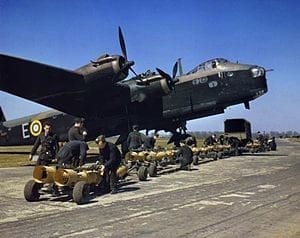Twins of the Second World War: Guest post by Bob Carswell (my friend from elementary school and high school days in Montreal)
Twins of the Second World War: The Shortt Stirling Bomber
The evolution of the treatment of identical twins during WWII came about due to perceived value in treating them as one unit. In the first years of WWII they were separated and expected to do their best based on individual merits.
In one family, two sets of fraternal twins went to war, one as a motorcycle rider, another as a private in the infantry, a third as a member joined the forestry team and the last was a rear gunner in a bomber. The infantryman was wounded, survive and returned to battle the first twin to die. The rear gunner also died in the war.

Shortt Stirling Bomber. Photo credit will be added; as a rule I do not use photos without credits; in this case a temporary exception is made.
Two twins, each having lost a brother returned to Canada. Moving from Ontario to the West Coast, one became a paraplegic as a result of an industrial accident. His brother, always the laziest of the bunch ended up moving west to join his brother but actually seemed to be there to take advantage of the situation. These were not identical twins which will account for their behaviour patterns and different choices.
In another case, a pair of identical twin brothers went to war as early bomber pilots flying the massive Shortt Stirling bomber, the first four-engined heavy bomber of the Second World War. Flying with a crew of seven, a total of 2,371 of this bomber type were built. It first flew in May, 1939.
In late 1943 it was relegated to second line duties as a tow tug for gliders, transport airplanes and the like. Its one great advantage was that it could carry up to 14,000 lbs of bombs, double that of any bomber to follow putting it in a class of its own. During WWII, the Stirling flew a total of 14,500 sorties during which 27,000 tons of bombs were dropped. A total of 119 bombers were written off the books while another 582 were lost in combat. Two pilots of Stirlings were posthumously awarded the Victoria Cross.
Twin brothers left an important mark as bomber pilots only to lose their lives in different situations. During WWII a total of 28 RAF squadrons flew the Stirling. To this day, attempts are being made to reconstruct the bomber without blueprints. However, the task is a mighty one and may not ever see completion.
[End]
A note from Jaan Pill regarding sources and citations
I have checked with Bob Carswell regarding sources and citations for his stories. From his responses, I have the sense that he has sound sources to back up his stories. I will share some of the sources when time permits. As a rule, I like to ensure that when statements of any kind appear at this website, there is sufficient citation of sources to give readers a sense of the origin of the statement. In the case of photos, I make an effort to ensure that whatever is posted has a caption and a photo credit.

Leave a Reply
Want to join the discussion?Feel free to contribute!